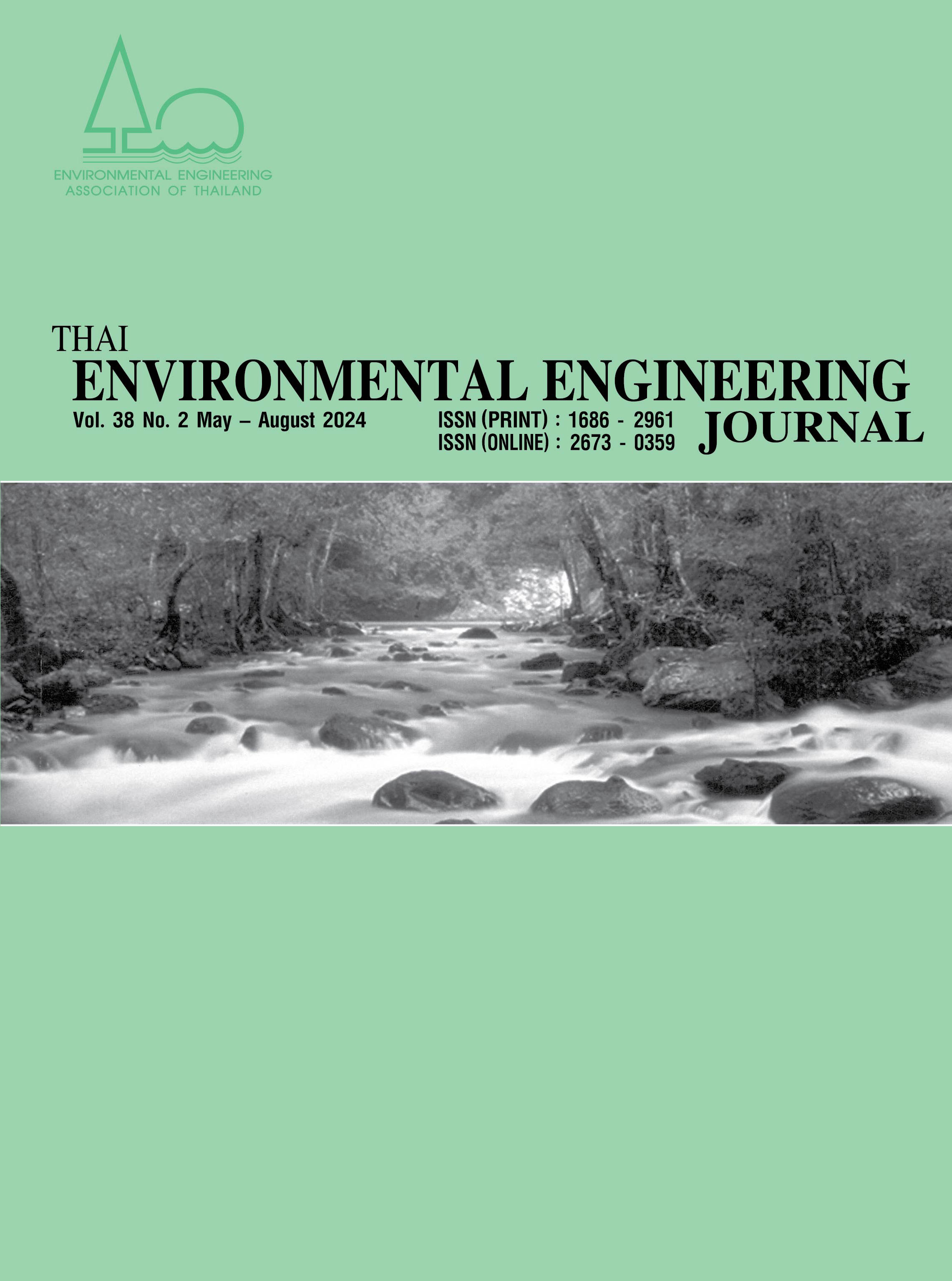Sustainable Indicators of Water Resource Development Projects in Conservation Areas, Thailand
Main Article Content
Abstract
Water resources development in Thailand is a very considerable aspect due to high variation of hydrological regime. Responsible agencies have to sufficiently supply in terms of quantity and quality raw water for various needs including water supply, agriculture, as well as industrial and other uses. Development of a water reservoir is one of the efficient
measures as for water source, in spite of some limitations. Unfortunately, the appropriate locations of potential reservoirs are mostly located in the natural resources conservation area occupied with the abundantly good ecological system, which might lead to the conflict of interest between the line agencies of water resources development and natural resources conservation. Despite the national laws and policies specify to promote sustainable water resource development, specific guidelines and standards for quantity-based consideration of sustainability together with the balance between resources development and conservation of a potential project have not yet been defined in details.
Consequently, the quantitative criteria to establish the sustainable water resource development indicators, applying the principles of self-sufficiency economy and transitioning from the extreme development of high into moderate impact levels with self-sustaining development, will ensure that the future water resources project development can be carried out successfully and effectively towards sustainability. The study is qualitative research using the Del Phi method. The Del Phi’s panel comprised selective 20 experts of various related ields, governmental agencies and independent academia. The research conducted firstly by defining draft relevant dimensions, factors, and indicators drawn from the previous related researches, and from in-depth interviewing 7 experts of the key related fields. Then the additional indicators and their scoring ranges were intensively determined and classified from the data and information of the 30 reservoirs’ environmental impact assessment (EIA) reports as well as those referenced from the relevant researches, governmental agencies’ regulations and announcements. The draft final indicators and scoring ranges were summarized and proposed to the Del Phi’s panel not less than two rounds to obtain their majority conclusion on indicators, weighting factors, scoring ranges and recommendations of sustainability level for the future projects.
The study results indicated that the relative importance weighting of four dimensions to be considered were : engineering (20%), natural resources and environment (35%), social (25%), and economics (20%). This research identified 14 main factors of which 7 factors having high significance, including (1) wildlife, (2) forests, (3) ecology system, (4) number of affected people, (5) quality of life, (6) economic feasibility, and (7) social opposition. These 14 factors comprise a total of 29 key indicators, with 12 highly significant indicators including (1) uniqueness, (2) number of opponents, (3) water quality, (4) annual cultivated area per reservoir capacity, (5) design flood rate per reservoir capacity, (6) environmental economic feasibility, (7) economic feasibility, (8) proportion of beneficiaries on sufferers, (9) conservation area type, (10) Number of evacuated households per unit of reservoir capacity, (11) endangered wildlife, and (12) biodiversity of wildlife.
Article Details
References
Piyachana, A. 2013. The State of Natural Resources and Environment at Phu Phan National Park and Surrounding Areas. Sripatum Review of Humanities and Social Sciences.
Poomjamnong, N. and Charoenwong, U. 2017. The project to survey the status of sustainable development goals in the context of Thailand and options for economic, social, and legal measures. Goal 15. Final Report, Mahidol University.
Noywuli, N. Sapei, A. Pandjaitan, H. N. and Eriyatno, E. 2006. Assessment of Watershed Carrying Capacity for the Aesesa Flores Watershed Management, East Nusa Tenggara Province of Indonesia. Environment and natural resources Journal. 17(3). (2019) Jul-Sep.
Tong, X. Guan, X. Lu, S. Qin, F. Liu, X. and Zhang, D. 2020. Examining the spatiotemporal change of forest resource carrying capacity of the Yangtze River Economic Belt in China. Environmental Science and Pollution Research. 27: 21213-21230. (2020).
National Park Research Section, Nation Park Division, Department of National Park, Wildlife and Plant Conservation. 2019. Prioritization of the National Parks in Thailand.
Smith, T. E. and Zhang, X. H. 2007. Evolution of Sustainable Water Resource Indicators. Water Environment Federation. 2624-2649.
Morris, J. 2019. Developing and exploring indicators of water sustainable development. Heliyon. 5(5). May 2019. https://doi.org/10.1016/j.heliyon.2019.e01778.
Liang, X. Zhang, R. Liu, C. and Liu, H. 2018. Quantitative Measurement of the Sustainable Water Resource Development System in China Inspired by Dissipative Structure Theory. Sustainability. 2018. 10(11): 3996. https://doi.org/10.3390/su10113996.
Corrêa, M.A. and Teixeira, B.A. 1905. Developing Sustainability Indicators For Water Resources Management In TIETÊ-JACARÉ BASIN, BRAZIL. Journal of Urban and Environmental Engineering. 7(1). (January to June 2013): 8-14. ISSN 1982-3932 doi: 10.4090/juee.2013.v7n1.008014.
The National Statistical Office of Thailand. 2023. Establishment of the water management indicator (WMI) in Thailand. Bangkok.
Bureau of Project Management of The Royal Irrigation Department. 2014. Study guideline of water resource development planning. Bangkok. Royal Irrigation Department. Retrieved from https://www.dmr.go.th
Office of Natural Resources and Environmental Policy and Planning. 2023. Guidelines for preparing environmental impact assessment reports for water development projects. Bangkok. Office of Natural Resources and Environmental Policy and Planning.
Department of Conservation Science. 2009. Final Report Watershed Analysis of Huai Isar, and Huai Rang River Uthai Thani Province. Faculty of Forestry, Kasetsart University. Bangkok.
Department of National Parks, Wildlife and Plant Conservation (DNP). 2021. The announcement regarding the determination of the value of natural resources in National Park, Park, Forest park, and Arboretum 2021. Ratchakitcha. Vol 138, Part 301.
IUCN. 2015. The IUCN Red List of threatened species. Version 2015.4. http://www.iucnredlist.org. Assessed. August 2016.


